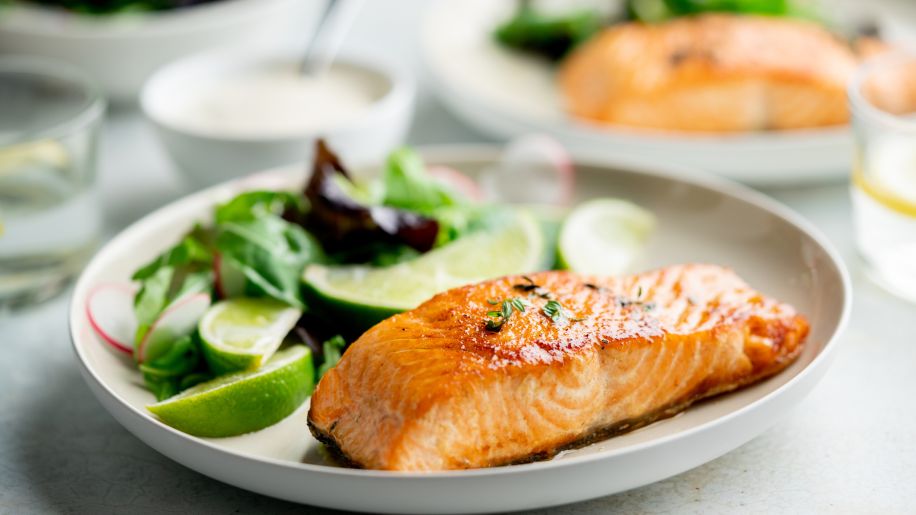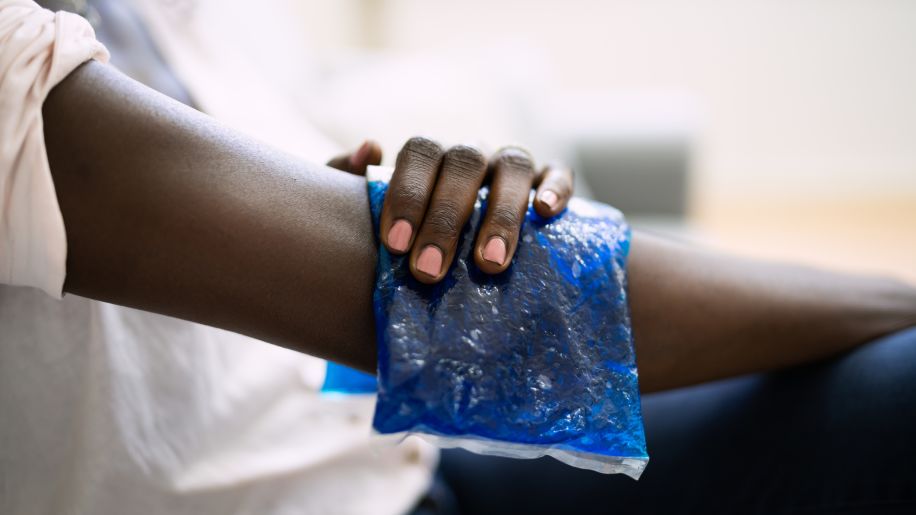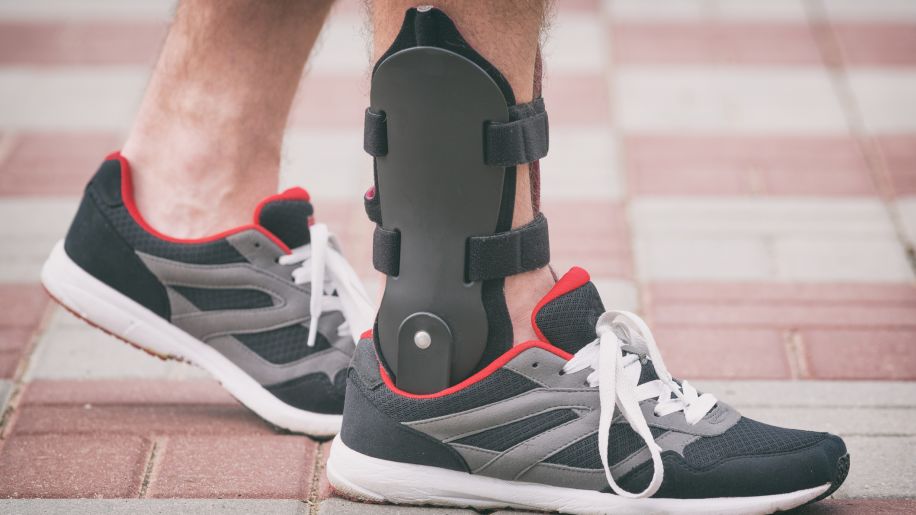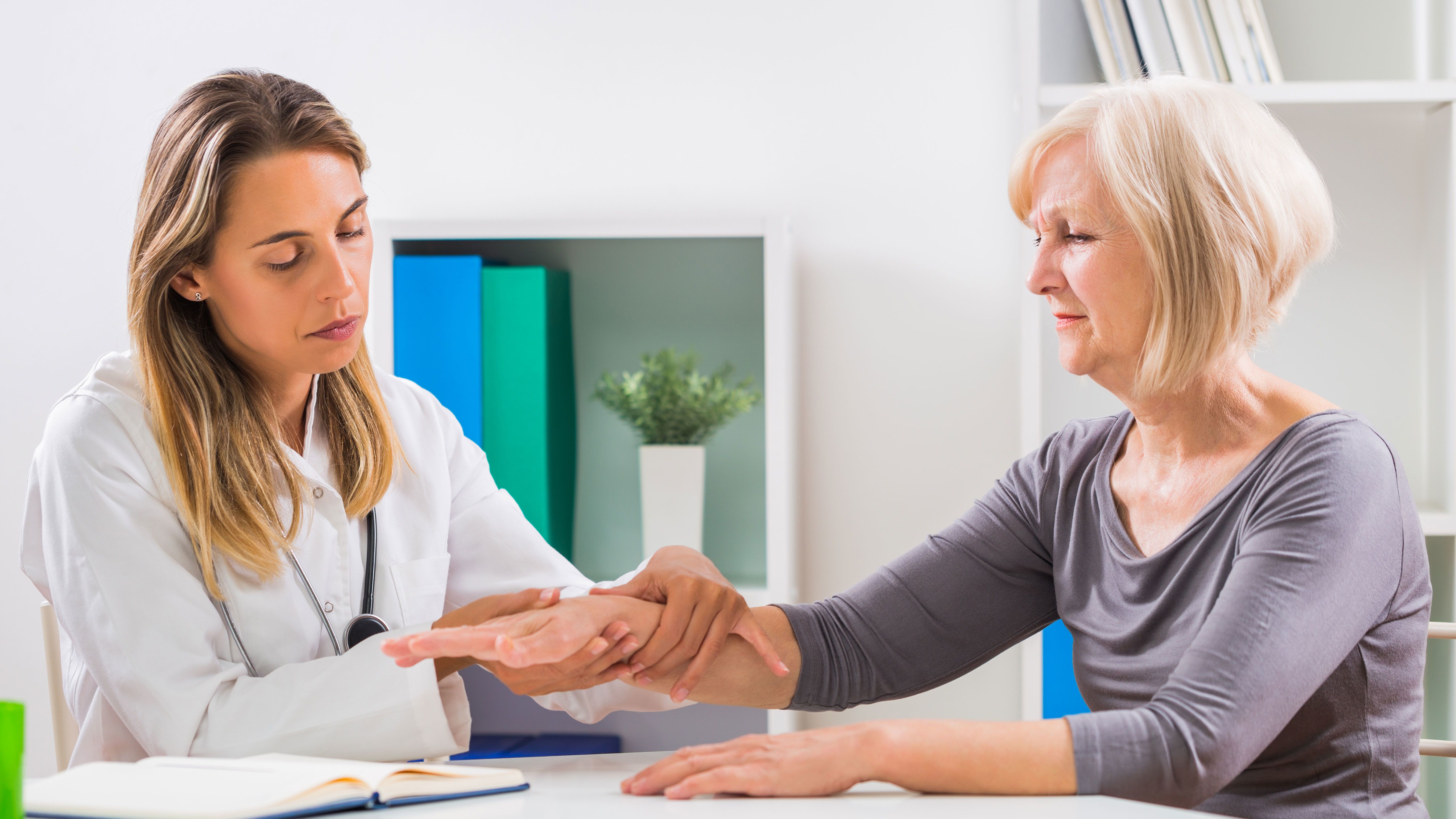9 ways to live better with rheumatoid arthritis
Use these self-care strategies to fight RA.

When it comes to rheumatoid arthritis (RA), you know better than anyone else how you feel and what affects your pain. Pay attention to your physical and emotional health, and take a proactive approach toward pain management with a well-rounded plan. Sharecare expert and rheumatologist, Scott Zashin, MD, says a focus on reducing inflammation and preventing further damage can relieve pain, improve mobility, and decrease fatigue. Start with these 9 self-care steps to find relief.
Medically reviewed in March 2020.

Maintain a Healthy Diet
A healthy diet isn't a cure, but it can make life with RA easier. A Mediterranean diet -- loaded with fruits, vegetables, and healthy fats -- may ease inflammation and pain. Michael T. Murray, MD, co-author of The Encyclopedia of Healing Foods, says the importance of eating fresh fruits and vegetables can't be overstated because these foods are loaded with pain-fighting antioxidants, including vitamin C, beta-carotene, vitamin E, and selenium. People with RA have a higher risk of developing osteoporosis, and a balanced diet rich in calcium and vitamin D can also improve bone strength. Talk to your doctor before taking supplements or making major dietary changes.

Stay as Active as Possible
When you have stiff, painful joints, exercise is probably the last thing you want to do. Based on your rheumatoid arthritis pain level, consider adding a reasonable level of physical activity to your daily routine. Simple stretches or a short walk can help you beat fatigue, boost your energy, and improve your sleep. If you're not a regular exerciser, ask your doctor about physical therapy. A physical therapist can create an exercise routine that's right for you. Movement can stimulate your range of motion and strengthen muscles and bones.

Make Time to Rest and Relax
Fatigue is a significant rheumatoid arthritis symptom that can wear you down. Some people with RA try to push through the exhaustion, but this may actually intensify pain flare-ups. Learn to let go and relax. During flares, physicians recommend 10 to 12 hours of rest each day. This includes sleep at night, lying down to rest, and napping during the day. While it may be frustrating to slow your pace, relaxation techniques can go a long way for your overall health and well-being.

Try Hot and Cold Therapy
To ease aches and pains, try a mix of hot and cold therapy, also known as thermotherapy. Most doctors recommend using cold packs during an acute RA flare-up and heat to ease daily joint and body pain. Use cold to numb painful joints, and heat to relax tense muscles and promote blood circulation. For cold, try ice, cold gel packs, or frozen vegetable bags. For heat, try heating pads, a hot bath, hot towels, or paraffin wax treatments. Sharecare expert and RA advocate Ashley Boynes-Shuck says trial and error can help you determine if ice or heat works best. Use thermotherapy once or twice a day for 10 to 20 minutes at a time and monitor your RA symptoms.

Practice Joint Protection
Rheumatoid arthritis makes your joints vulnerable to injury. Everyday activities can stress and inflame joints, leading to deformities and more severe pain. To protect your joints, pay attention to your body's movements. Avoid putting excess strain on any one joint. For example, when carrying your groceries, use your largest, strongest joints. Avoid carrying heavy bags with your hands, wrists, or fingertips. Instead, wrap both arms around and under your bags. Maintain comfortable and safe posture positions at home with the help of ergonomic furniture. If you spend a lot of time sitting, get up every few hours and walk around for a few minutes.

Work Smarter with RA, Not Harder
RA can cause mobility or dexterity problems, but assistive devices and tools can make life easier. If you have trouble getting around, consider using a cane or a splint or brace (also called, orthotics). Prevent falls at home by installing grab bars near the tub or toilet. Other RA-friendly fixes include a raised toilet seat or shower seat to make bathing easier. Struggling in the kitchen? Try a food processor or an electric can/jar opener to save time and pain. Use a "reacher" to grab objects off the floor or shelves. RA-friendly faucet handles, doorknobs, and light switches can also help. An occupational therapist may have more suggestions to ease your day-to-day.

Quit Smoking
Smoking is bad for your health in many ways, but if you have rheumatoid arthritis there's even more reason to quit. Studies show smoking can increase joint swelling, tenderness, and overall disease activity. Smoking can also put people with RA at a higher risk for heart disease and stroke. Ending this bad habit can play a big role in soothing RA symptoms and reducing complications for other health risks

Use Your Social Network
Tap into the support of family and friends to manage your RA pain. Spending quality time with loved ones can take your mind off RA pain, boost your happiness levels, and ease stress. Lean on loved ones to help with household chores or other daily activities that may cause you difficulty. These key relationships can help you cope with RA constructively and avoid becoming depressed about pain symptoms. Remember to communicate openly with family and friends to help them understand what you're going through.

Get Support from People with RA
Support from family and friends is vital to your pain management, but your loved ones may never fully understand your experience. Join a community of others living with RA and share tools, tips, and insights on living well with your condition. A support group can provide much-needed understanding, especially when you just need to vent. Your RA peers can provide you with a source of strength and wisdom, and remind you you're not alone in this journey.
Featured Content

article


video

article


video
